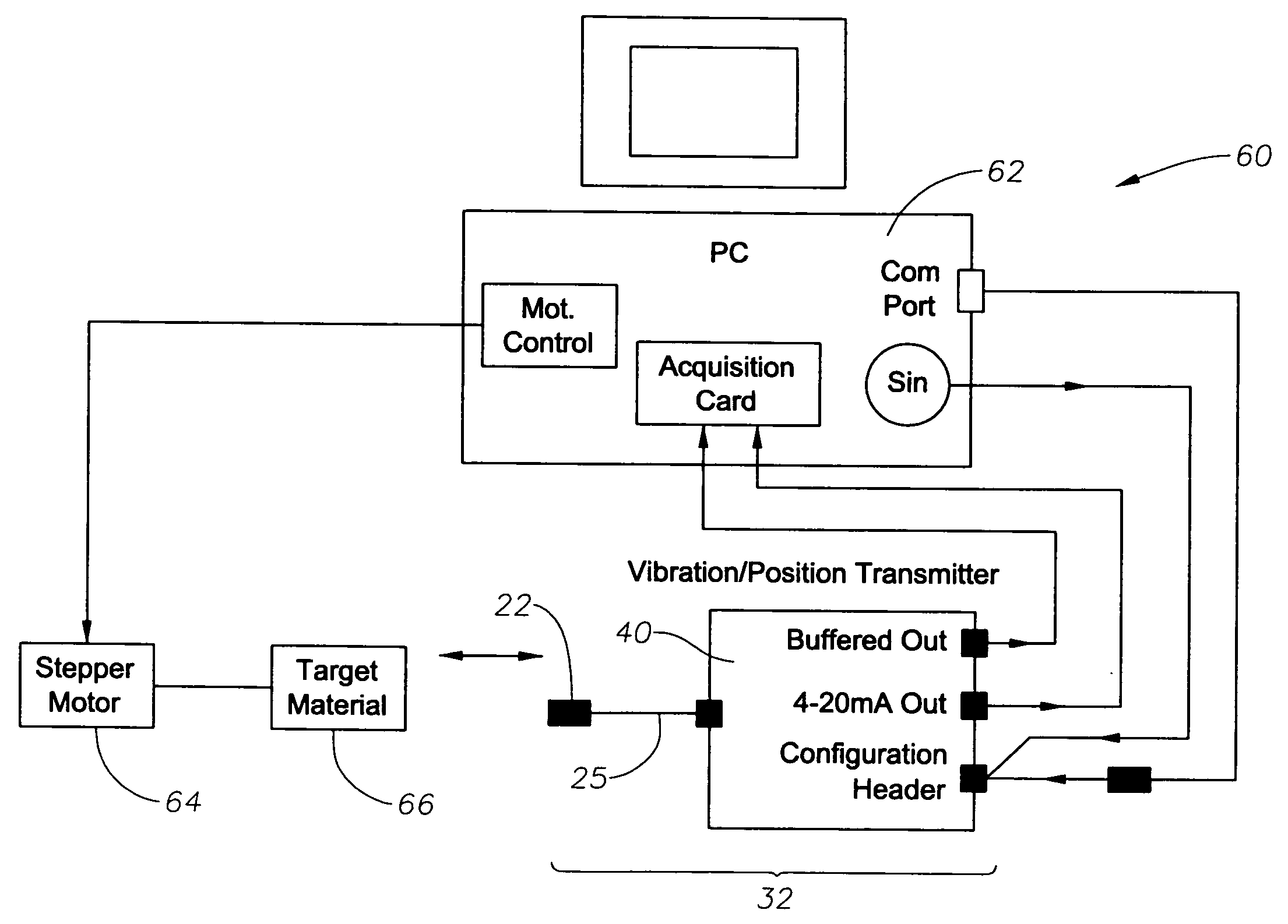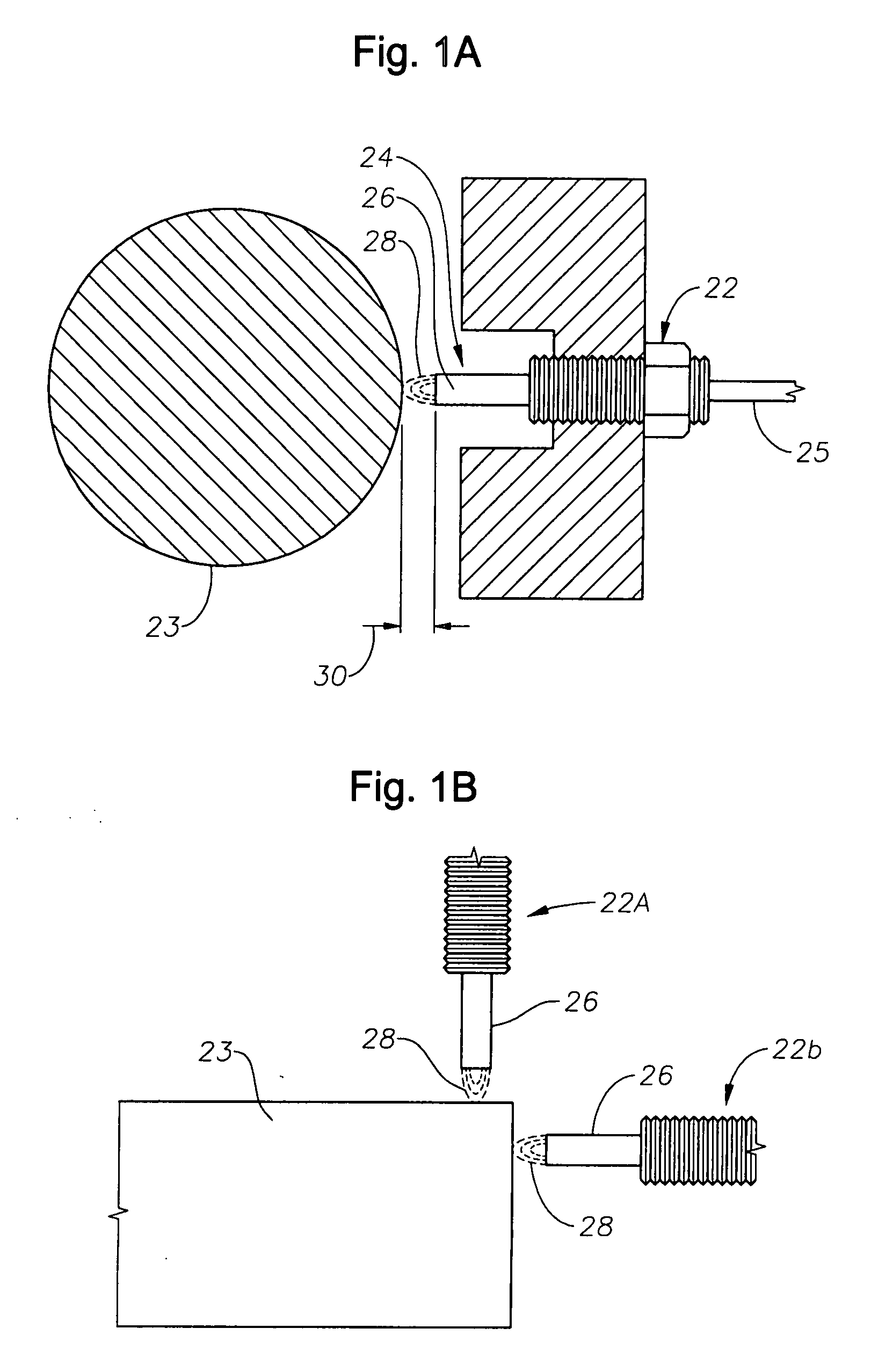Proximity probe transmitter
a technology of proximity probe and transmitter, which is applied in the direction of vibration measurement in solids, instruments, and stray field compensation, etc., can solve the problems of reducing the accuracy of the system, reducing the cost of preventive maintenance and repair, and reducing the power consumption requirements of the machinery. , the effect of minimizing the downtime of the machinery
- Summary
- Abstract
- Description
- Claims
- Application Information
AI Technical Summary
Benefits of technology
Problems solved by technology
Method used
Image
Examples
Embodiment Construction
[0027]The principles of eddy current probe displacement monitoring is illustrated in FIGS. 1a and 1b. This Figures shows a cross sectional view of an eddy current probe 22 adjacent a target surface 23. At one end 24 of the probe 22 is a coil 26, preferably wound in a flat “pancake” configuration near the probe end 24. A coaxial cable 25 extends from the opposite end of probe 22. When coil 26 is excited with a radio frequency (RF) current, an electromagnetic field 28 penetrates the target surface 23. When the target 23 is conductive, this electromagnetic field induces eddy currents in the target material. These currents produce an additional electromagnetic field which affects the impedance of the coil 26. The magnitude of the eddy currents is dependent on the gap 30 between the probe tip 24 and the target surface 23, and therefore the impedance of the coil 26 is also dependent on the same gap. Measurements of the coil impedance (or, preferably, other parameters affected by coil impe...
PUM
 Login to View More
Login to View More Abstract
Description
Claims
Application Information
 Login to View More
Login to View More - R&D
- Intellectual Property
- Life Sciences
- Materials
- Tech Scout
- Unparalleled Data Quality
- Higher Quality Content
- 60% Fewer Hallucinations
Browse by: Latest US Patents, China's latest patents, Technical Efficacy Thesaurus, Application Domain, Technology Topic, Popular Technical Reports.
© 2025 PatSnap. All rights reserved.Legal|Privacy policy|Modern Slavery Act Transparency Statement|Sitemap|About US| Contact US: help@patsnap.com



